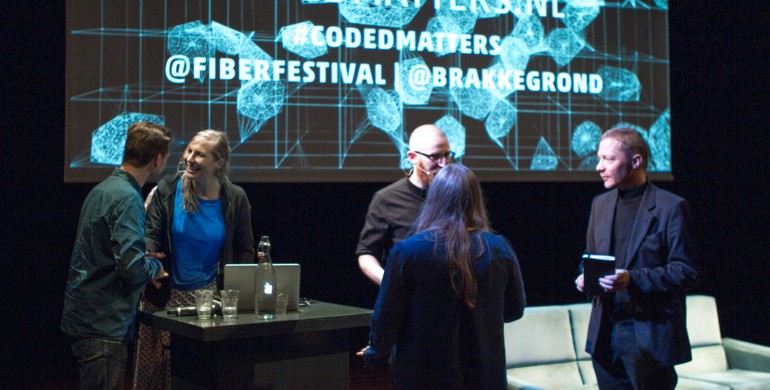Algorithmic Wildlife: recap
For the 10th anniversary edition of Coded Matter(s), Sanneke Huisman of LIMA wrote a recap for us. For those of you who couldn’t attend: here’s a great way to catch up on the evening’s content. If you’re more the visual type, there’s a bunch of photos on Facebook. If you don’t like reading: watch this space, videos of the full talks will be up soon as well.
And now, without further ado: a retrospective of Coded Matter(s) #10: Algorithmic Wildlife.
Coded Matter(s) #10: Algorithmic Wildlife
About dogs and the cabinet of curiosities
Our ever-increasing digital world is ever-increasingly dominated by algorithms. They are here to solve small recurrent problems, or form the basis of more complex computer programs. There are sorting-algorithms, search-algorithms, path finding-algorithms and so on. We live with them on a daily basis, but usually never see them. Coded Matter(s) #10: Algorithmic Wildlife provides insight in the hidden world of these procedures and formulas. Who are they, this virtual species infiltrating our worlds? Are they our pet dogs or did we create a monster of Frankenstein? During an investigative night in Flemish Arts Centre De Brakke Grond, experts try to find the right analogies for this mysterious bunch of code. And a whole lot more, of course.
An Mertens, core member of Constant, a Brussels-based artist-run organisation for art and media, approaches the subject from her interest in literature and code. She touches upon both technical and ethical questions in regard to algorithms. Though researched through language and literature, Mertens’ algorithms have a strong physical presence. You can dance with them, lay them out on your kitchen floor, or use them to create a choreography with objects representing variables. This playful approach leads to a more critical point of view. Mertens makes us aware of the omnipresence of algorithms, up to the point that we can be powerless in front of our own computers. She quotes the time that the algorithms of Amazon.com bugged out and all items were on sale for a penny. The hidden structures of the website popped up by surprise, due to an unexpected malfunction.
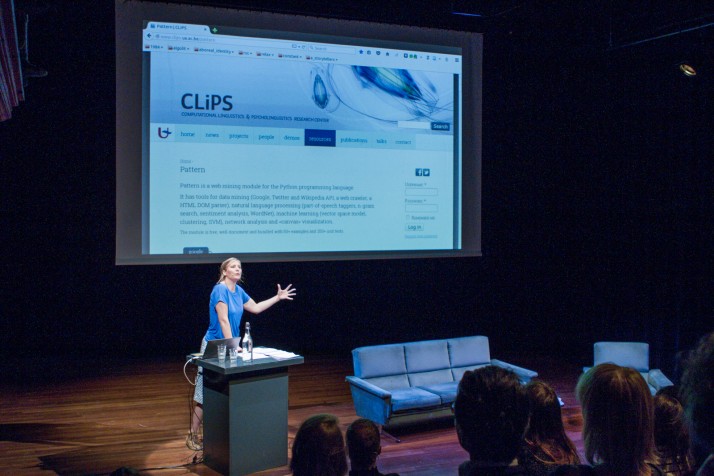
When automated systems replace or work together with humans on important decisions, we have to know them well. Even more so when they start to analyse human emotions, as shown in the example of affective computing in relation to a book by Kafka. The entire text was ordered on affect by Quicksort, a simple but effective algorithm from the seventies. It recognised and labelled every sentiment: red for negative and green for positive. Surprisingly, the text by this dark-minded genius did contain quite a few sentences highlighted in green. This inventive inventory of the book tells us more than the anecdotic fact that you can actually read Kafka without getting depressed. It makes us wonder where this interpretation of sentiments comes from, and how reliable it is. All the input this algorithm has is simply text, so there is nothing other than human labour at its base. Who then is this judge of the sentiments? An Mertens pleads for a deconstruction of the algorithms that surround us.
That code can rule our world not only emotionally but also financially, is illustrated in the following talk by RYBN, all the way from Paris. RYBN is a creative collective of hackers and artists which came from the fields of experimental music and the internet, with an extradisciplinary approach towards their research subjects. This concept, as explained by the art historian Brian Holmes, allows them to have a more free and non-expert approach towards a broad variety of disciplines. Like online stock market trading, for instance. RYBN made high-frequency trading into a form of art by building a virtual trading bot. With the 10.000 euro subsidy they received from the French Minister of Culture, the algorithm-based robot does nothing other than trading. While at first rapidly approaching bankruptcy, the bot regrouped without a single change in its source code and has now been miraculously turning profit for some time. RYBN left the bot untouched for over four years already, just to see what happens. An enormous amount of time in a world in which everything is counted in microseconds.
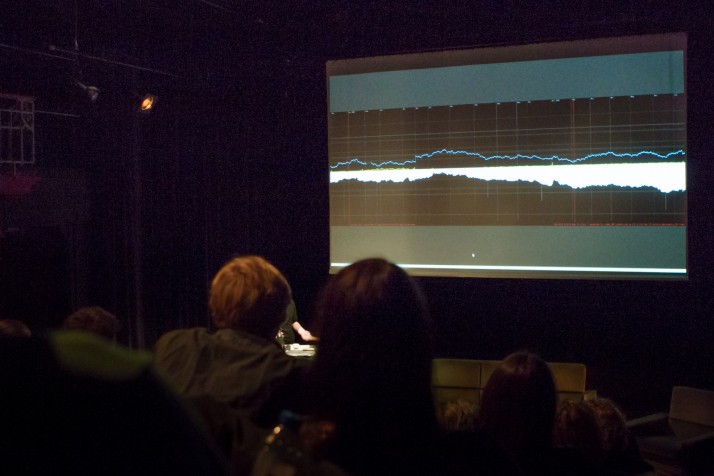
RYBN is full of these types of ideas and related stories. Have a look for instance at their Algorithmic Trading Freak Show, a project in which they collect and present the history of uncommon trading techniques. Their cabinet of curiosities, as the call it themselves, consists of documentation material of all these weird experiments, like Malkiel’s blinded chimpanzees (1973), an experiment in which blinded chimpanzees had to throw darts at the Wall Street Journal.
But their best story might be the one on the ‘prediction’ of the future. RYBN shows us an paper by the academic Johan Bollen and two of his colleagues. Together they stated that with an 86 percentage accuracy, tweets, or twitter mood, could predict the future. After a five billion dollars investment in a company, it ended in a catastrophe. RYBN explains that there were so many companies that used this method of predicting the future, that it got stuck in a vicious cycle, and ended up predicting its prediction. In addition, a fake tweet about an attack on the White House completely disorganised the system. In several minutes the message was spread rapidly over the network, all these predicting machines being unable to recognise the message as a fake. Bottom line: though they spring from human thoughts and analyses, algorithms are far from being human.
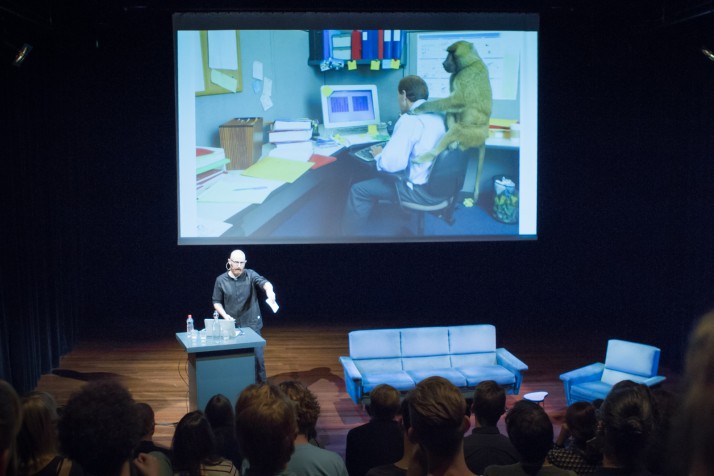
It is Sjef van Gaalen, founder of the research lab Structure & Narrative, who zooms out by focusing not on specific types of algorithms, but on algorithms as a class of beings. What was already touched upon by both Mertens and RYBN, is explored further by Van Gaalen. He states that the ‘wildlife’ is not out there, but here in our pockets. Most of us carry around quite a bunch of hosts of algorithms without knowing what they really are.
Based on the ideas of Donna Haraway, he preposes a new framework for thinking about algorithms: algorithms as a companion species. Haraway, a prominent scholar in the field of science and technology studies, well-known for her book The Cyborg Manifesto, explained her concept of ‘companion species’ by relating it to her dog. And as it was with dogs, when we apply this framework to algorithms, it turns out to be a beautiful but somewhat one-sided relationship. We live with them, we can love them and teach them things, but we will never fully understand them. And mostly, they will never love us back – like neither an old fashioned Tamagotchi nor the latest IBM smart toy can. But if we train them well, they can evolve with giant steps. This depends on the data they are fed by: the quality of the algorithm depends on the quality of the input data.
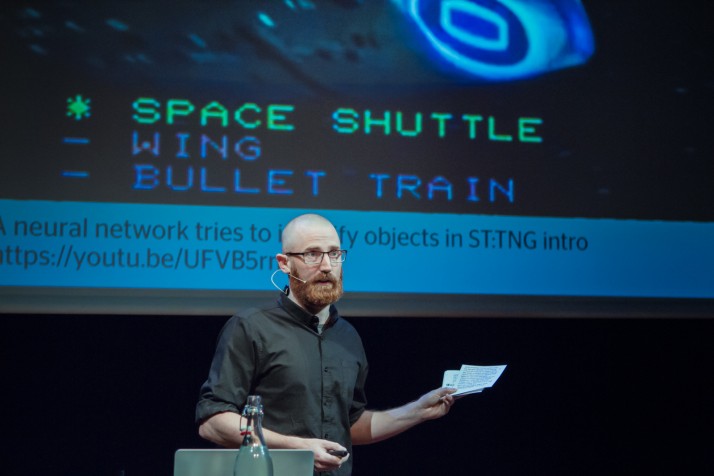
Not only this data, but also the algorithms itself are written, Van Gaalen continues. Code forms the basis of even the most complex algorithms, and code carries within it all the assumptions of its creator. To find out what and who the algorithm actually is, we have to look at its maker. This ‘face behind the algorithm’ is equally familiar as it is disturbing: it’s mostly affluent white male nerds from Silicon Valley. Their assumptions, emotions and data are not at all valid and representative for the entire planet. It’s the male white dominance the virtual world, with all the effects that has in the physical world. (Gee, male and white, sounds like a familiar problem in the art field too…) But it gets worse. After the source code has been written, most of the algorithms are developed further by big companies. And even more so than the white nerd: capitalism doesn’t give a shit about us, as long as we keep on spending money.
Coded Matter(s): Algorithmic Wildlife makes us aware of algorithms in our daily lives, and gives insight in the code that guides us through the web or even determines which part of the web we see. The diverse speakers of the evening show us how we can play with them, make money with them and love them like we’d love a dog. But none of them presented these mathematical formulas without warning. We have to know what we are dealing with, since algorithms are far from neutral.
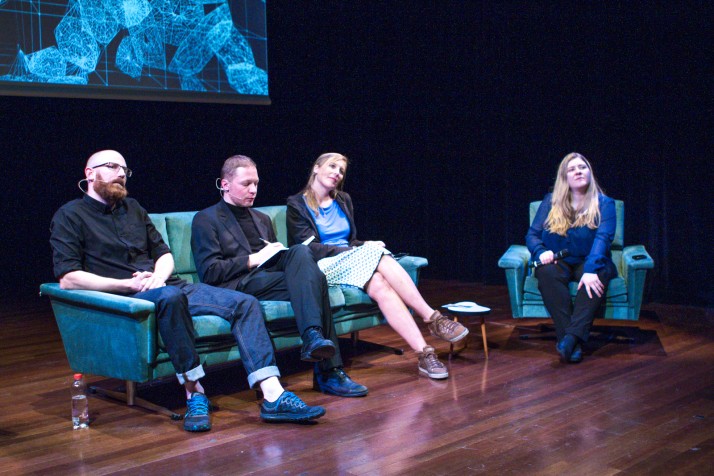
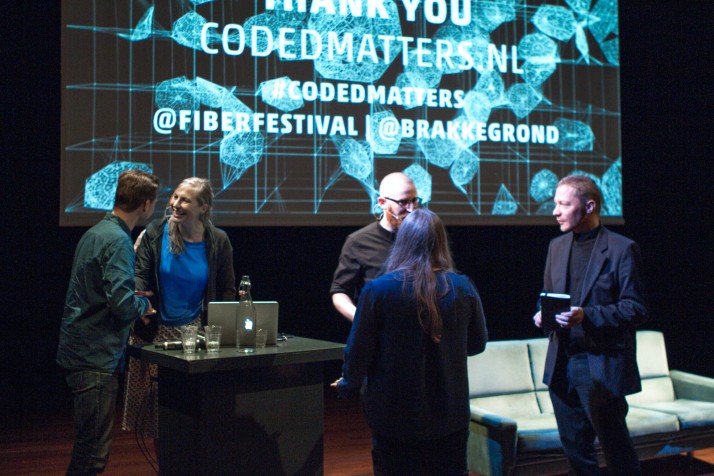
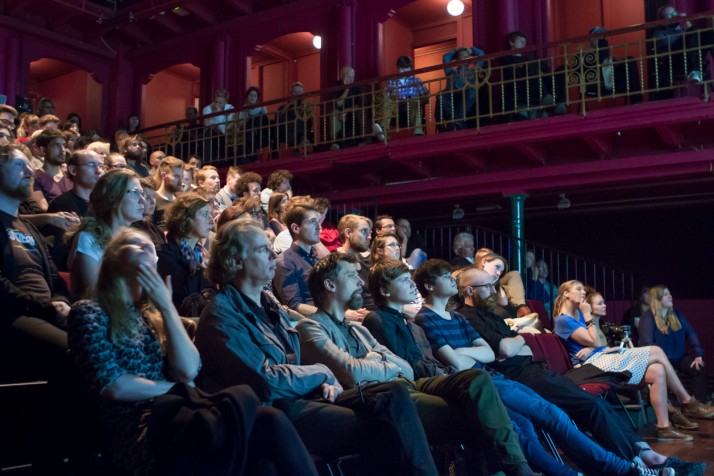
Ten is not enough, so we’ve got some neat new programmes lined up for the next 6 months. Stay tuned and subscribed to our newsletter to stay in touch.
